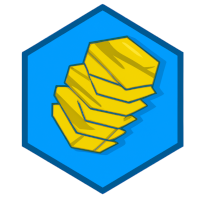* feat(backend): endpoint to download files by id * test(backend) coverage for file downloads |
||
|---|---|---|
| .github/workflows | ||
| assets | ||
| backend | ||
| frontend | ||
| script | ||
| .gitignore | ||
| README.md | ||
| Taskfile.backend.yml | ||
| Taskfile.frontend.yml | ||
| Taskfile.yml | ||

Rotini
Overview
Rotini is a self-hosted cloud storage application that gives you full-control over the data you store. It aims for simplicity and extensibility, such that you can get started in minutes and easily fork or contribute upstream if you fancy a feature that's not already there.
It's roadmap is currently TBD and will become better defined as it gets closer to a first release.
Development
Tooling
Utility commands are managed by go-task and can be called from anywhere. Running . script/bootstrap installs go-task within the project and gets everything ready. From there, task -l provides a
breakdown of available tools.
Note that this is the preferred way to running any tooling-related task within the repository, regardless of environment.
Running locally
The application requires a Postgres database instance to be made available to the backend. This can be done for you via
task be:start-db.
Starting the backend and frontend applications can be done via task be:start and task fe:start.
Starting the backend application
The backend application is available as a container, which you can run as
task be:start
If you opt to run your database in an adjacent container, you can either run containers in such a manner than they share
a network or define the database's host via docker.host.internal:
task be:start -- --add-host docker.host.internal:host-gateway
More generally, extra options can be passed to the docker run call that runs the application this way:
task be:start -- <options>
See the README files of each of those environments (backend, frontend) for specific requirements.)